Pregnancy transforms your body, and staying active helps you feel your best. With proper modifications, Pilates is a safe and effective way to support your strength and well-being.
This guide shows you how prenatal Pilates can improve posture, relieve discomfort, and prepare your body for birth—with tips, exercises, and safety advice for every trimester.
Benefits of Pilates During Pregnancy
Prenatal Pilates offers more than just gentle movement—it gives you control, confidence, and comfort throughout your pregnancy. Whether you’re brand new to Pilates or already familiar with the practice, this low-impact exercise can support your physical and emotional well-being from the first trimester through postpartum recovery.
Improves Core Stability and Posture
As your baby grows, your center of gravity shifts, affecting posture and balance. Prenatal Pilates strengthens your deep core, back, and pelvic floor to improve alignment. These safe pregnancy workouts help support your spine and reduce strain during pregnancy.
Reduces Back and Pelvic Pain
Many pregnant people experience lower back or pelvic discomfort. Prenatal Pilates targets the muscles supporting your hips and spine, helping ease pressure and improve mobility. With controlled, safe movements, you engage the right muscles without overexertion—making it an ideal pregnancy workout for comfort and strength.
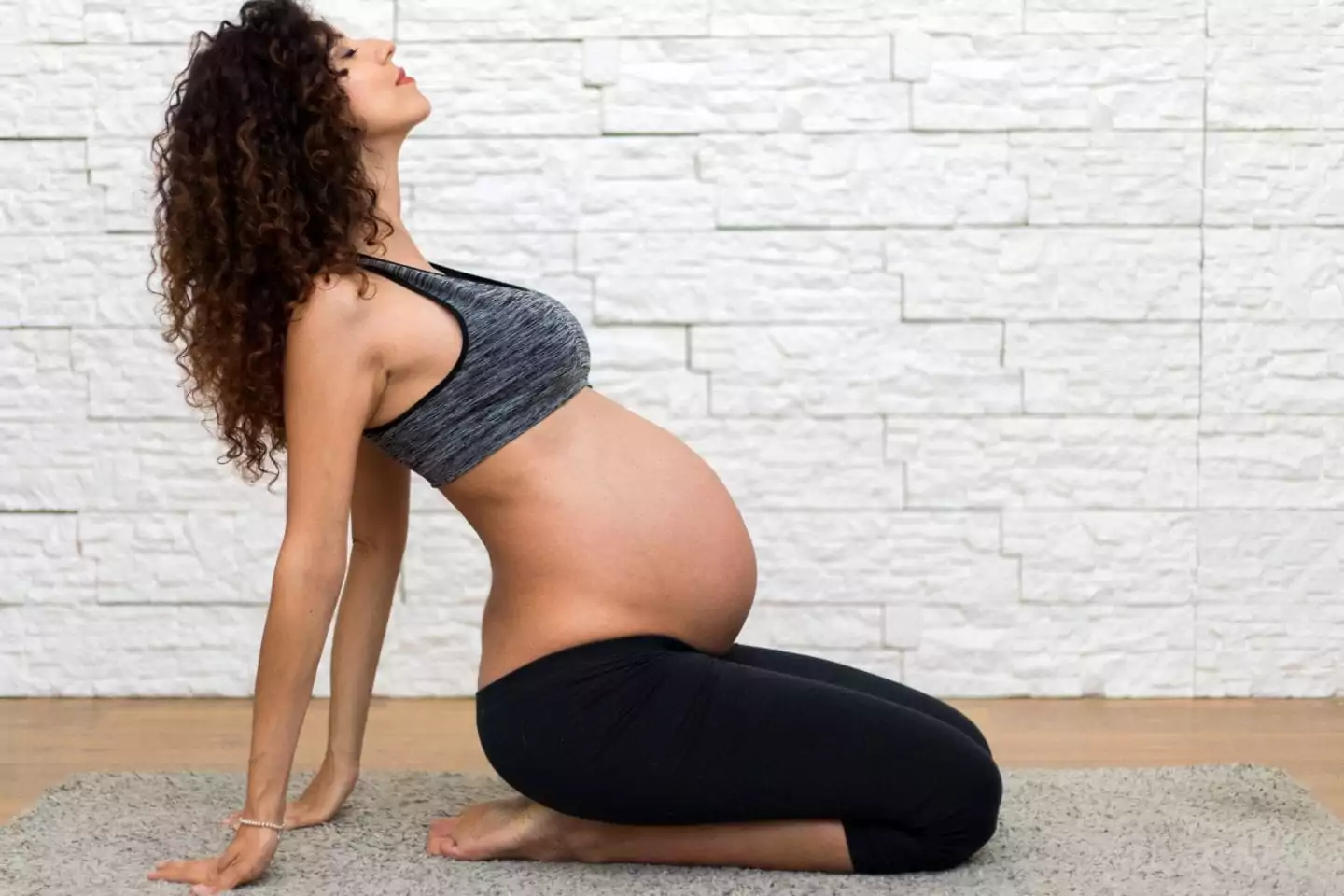
Helps with Breathing and Relaxation
Breathwork is key in prenatal Pilates. By practicing deep, controlled breathing, you can reduce stress, boost oxygen flow, and connect with your changing body. These breathing exercises during pregnancy are especially helpful for managing anxiety and tension as your due date approaches.
Supports Labor and Recovery
Pilates boosts your pelvic floor awareness, stamina, and control—key for a smoother labor. After delivery, these same prenatal Pilates techniques help you reconnect with your core and speed up postpartum recovery.
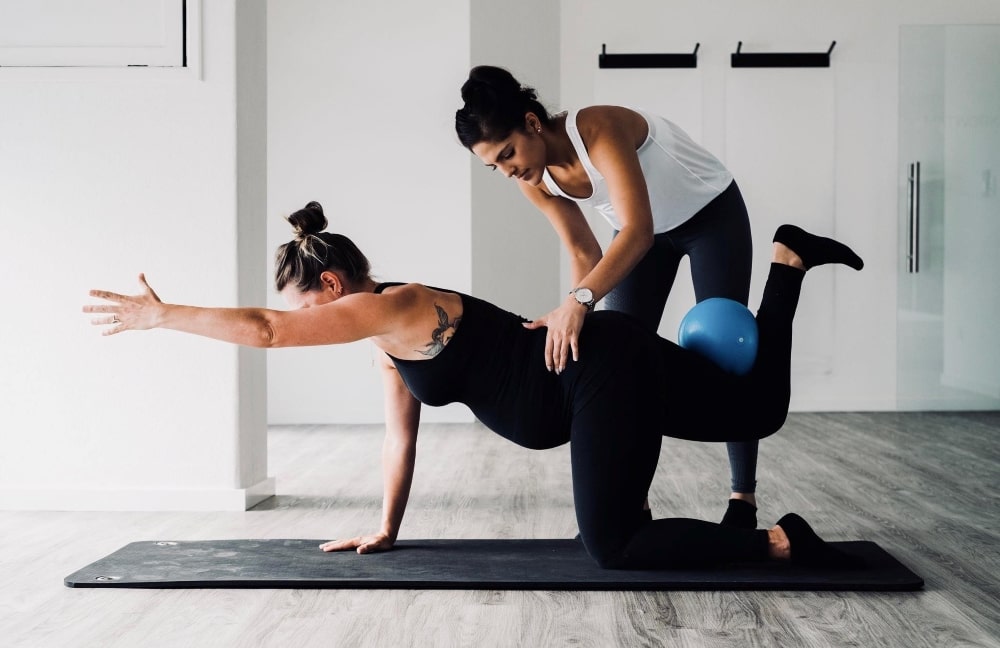
Tips for Each Trimester
During pregnancy, your body undergoes major changes—like increased blood flow, hormone shifts, and a changing center of gravity. These can affect joint stability and posture, making Pilates during pregnancy especially helpful. Prenatal Pilates supports your alignment, eases discomfort, and strengthens your core. Just remember: every stage is different, so it’s important to follow trimester-specific tips and know which Pilates exercises to avoid while pregnant.
First Trimester
During the first trimester, your body starts adjusting to pregnancy. You may feel tired or nauseous as hormones shift and your uterus expands.
Can you do Pilates while pregnant? Yes—just focus on gentle prenatal Pilates routines. These support your energy, ease anxiety, and protect your changing body.
Pilates and pregnancy can work well together, especially for strengthening glutes and hamstrings. Just be mindful—Pilates maternity moves should avoid overstretching since joints become looser during pregnancy.
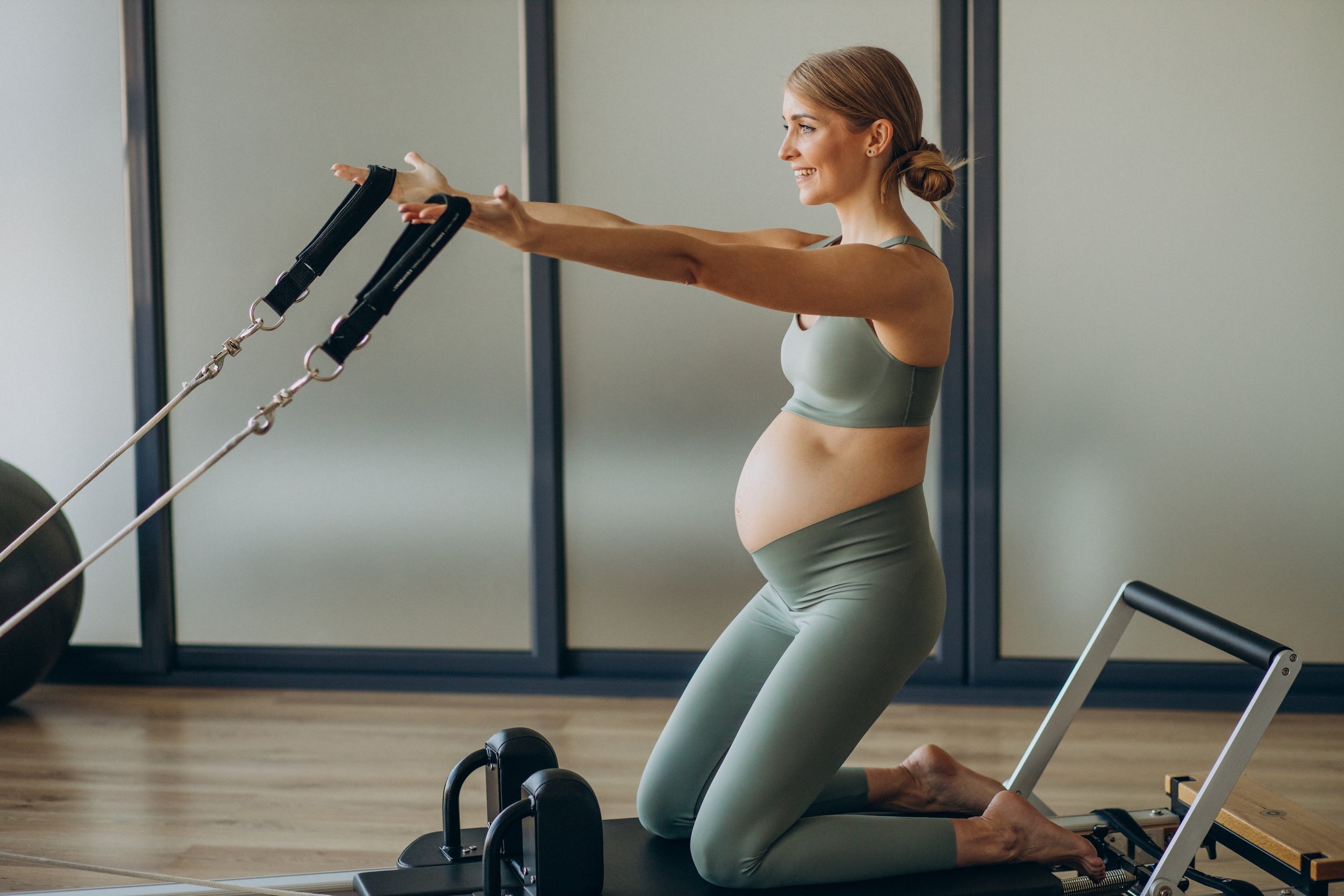
Second Trimester
In your second trimester, your energy may rise, but changes in your body affect balance and posture. During prenatal Pilates, avoid lying flat on your back—it may reduce blood flow. Use props or an inclined Pilates reformer for support. Focus on side-lying Pilates and pelvic floor exercises to safely strengthen your core. Skip planks, crunches, and face-down positions to protect against diastasis recti and pelvic floor strain. Engage your transverse abdominals and modify as needed to stay safe.
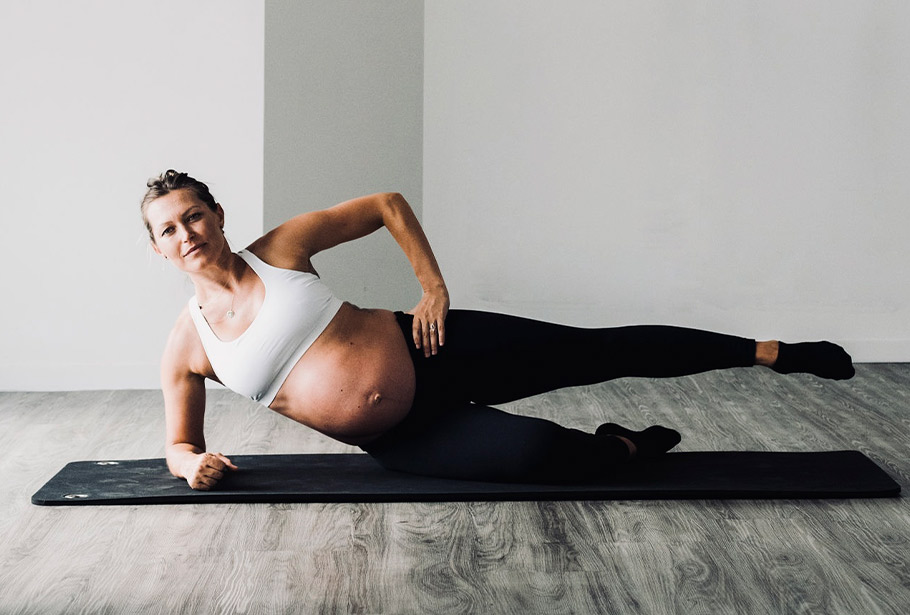
Third Trimester
In the third trimester, your energy may dip as your baby bump grows. Prenatal Pilates can still support you—just shift your focus to gentle movement, pelvic floor release, and mobility.
This stage is about preparing for birth. Pilates and pregnancy work well together to ease back strain, improve posture, and open the front body.
Pilates maternity exercises should emphasize comfort over intensity. Don’t worry about strength gains—just move mindfully and trust your body.
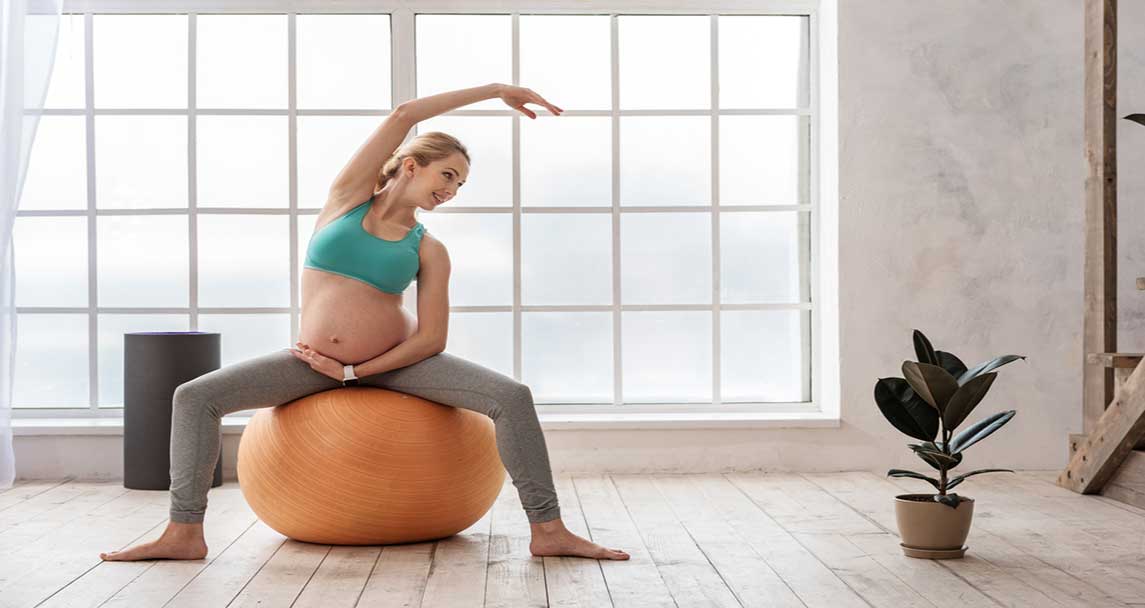
Pilates Pregnancy Exercises
Using a Pilates ball during pregnancy can greatly improve your core strength, posture, and overall comfort. Even simply sitting on the ball, as Bennett points out, can help ease tension in your lower back and hips.
Hip circles on the ball
Hip circles during pregnancy are a gentle way to ease tension and improve pelvic mobility. In your prenatal Pilates routine, stand with your feet firmly planted for balance. Slowly circle your hips to the right, then back, left, and return to center. Breathe deeply and move with control.
This safe pregnancy exercise supports your core and hips, especially during the second and third trimester. Do four circles in each direction to stay balanced and relaxed.
Side bends on the ball
In your prenatal Pilates practice, side bends are perfect for opening the side body and easing tension. Stand with your feet firmly grounded. Gently slide your right hand down the exercise ball as you reach your left arm overhead. Breathe deeply and hold the stretch for a moment.
This safe pregnancy stretch supports spinal mobility and posture, especially during the second or third trimester. Repeat four times, then switch sides to balance the body.
Arm circles on the ball
Add arm circles to your prenatal Pilates routine for better posture and upper body strength. Stand tall with feet planted, engage your core, and extend your arms. Make small forward circles—about 8 reps—then reverse.
This safe Pilates exercise during pregnancy helps reduce shoulder tension and supports your changing posture. Perfect for all trimesters, it's a gentle way to stay active and feel balanced.
Neck stretches and protecting your peace on the ball
Ease tension with this neck stretch during pregnancy. Sit tall with your feet grounded. Drop your right ear to your shoulder and reach your left arm out for a gentle pull. Nod your chin slightly forward to deepen the stretch. Breathe deeply, then switch sides. This simple prenatal Pilates stretch is perfect for relaxing in the third trimester.
Additional Pilates exercises that target key areas:
Deep breathing exercises
Breathwork is key in prenatal Pilates to engage your pelvic floor and deep core muscles. Inhale deeply to relax your pelvic floor, then exhale as you gently lift it while drawing in your deep core. This safe pregnancy exercise helps build strength and prepares your body for labor and delivery.
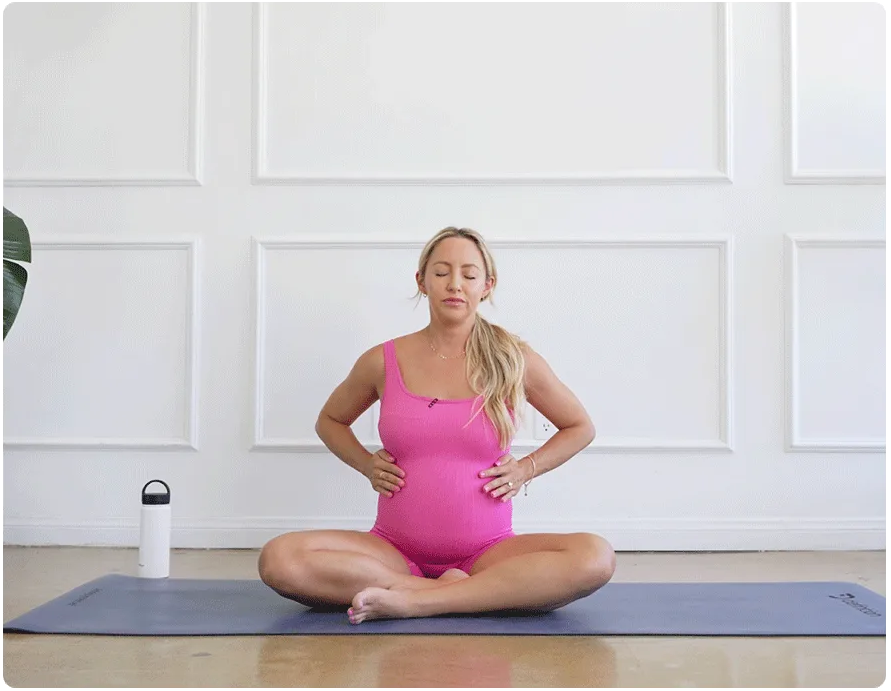
Modified plank marches
This prenatal Pilates exercise strengthens your core and pelvic floor safely. Place your hands on a chair for support and extend your legs into a modified plank. Inhale to prepare, then exhale as you pull one knee toward your chest. Inhale as you return the leg. Alternate legs slowly, focusing on control and steady breathing throughout.
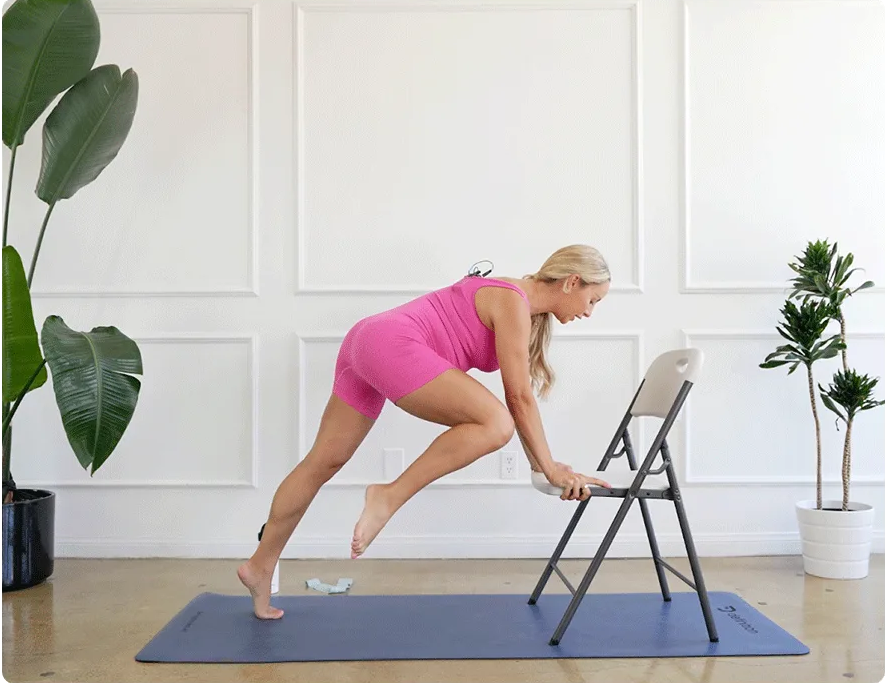
Side-lying clams
Side-lying clams target your outer glutes, helping support strong hips and a healthy back during pregnancy. Lie on your side with knees bent. Inhale to prepare, then exhale as you lift your top knee away from the bottom, opening like a clam. This prenatal Pilates exercise strengthens your hips and stabilizes your lower body safely.
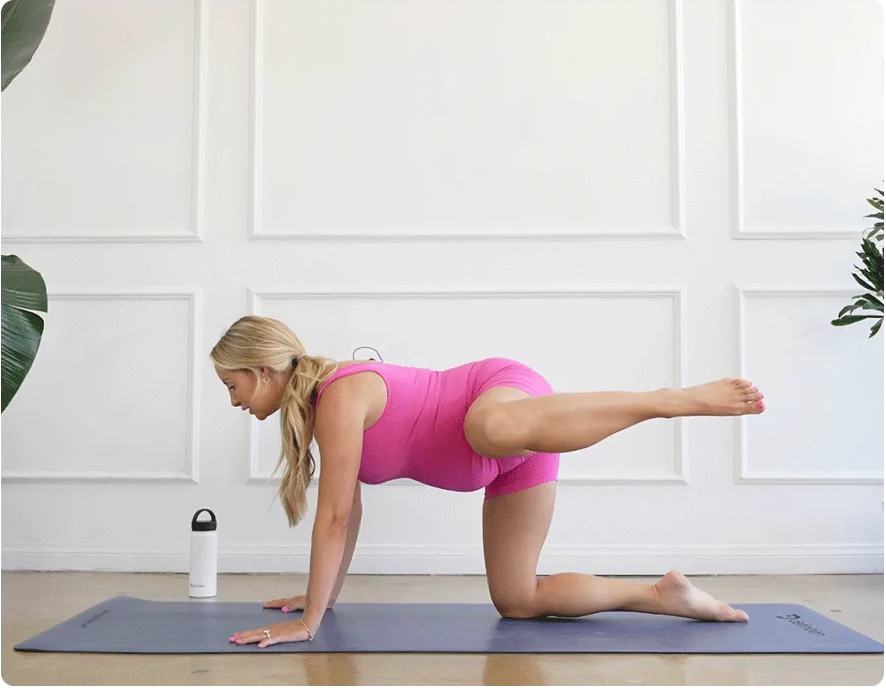
When to Avoid Pilates During Pregnancy
Pregnancy is a time to support your body—not to push limits. Prenatal Pilates is about listening to your body, moving with intention, and honoring how you feel each day.
Stop your workout and contact your healthcare provider immediately if you experience any of the following warning signs:
● Vaginal bleeding
● Dizziness or faintness
● Severe headache
●Shortness of breath (before exertion)
● Abdominal or pelvic pain
● Regular, painful contractions
● Chest pain
● Leaking amniotic fluid
● Calf swelling or pain (may signal a blood clot)
Your safety and your baby’s well-being always come first.
We are committed to delivering exceptional support and
top-tier service whenever you need it!
✅ Conclusion
Listen to Your Body, Stay Safe, and Stay Strong!
Pilates during pregnancy isn’t about pushing your limits—it’s about moving with care, strengthening your body for labor, and supporting your recovery after birth. Trust your instincts, rest when you need to, and focus on exercises that make you feel good.
If you have any questions or need help choosing the right gear, feel free to contact us via WhatsApp +86-13775339109, WeChat 13775339100 anytime. We're here to support your Pilates journey.

Talk To Our Experts
Connect with an NQ expert to discuss your product needs
and get started on your project.
Frequently Asked Questions
When should I tell my Pilates instructor I'm pregnant?
Let your instructor know before you begin. They can adjust your routine to fit each stage of pregnancy and ensure exercises are safe for you and your baby.
What exercises should I avoid when pregnant?
Avoid high-impact sports or activities that risk falls, such as martial arts, horse riding, skiing, or gymnastics. Also skip core exercises that put pressure on your belly, like crunches in later stages.
Is yoga or Pilates better for pregnancy?
Both are excellent! Pilates focuses more on core stability and alignment, while yoga enhances flexibility and relaxation. Try both and see what works best for your body.
Can you get toned while pregnant?
Yes, you can maintain tone through bodyweight movements like pelvic tilts, Kegels, and gentle Pilates routines. Staying active may even improve your energy levels and comfort during pregnancy.
Can I do AB workouts whi
Many ab exercises are safe when modified. Avoid crunching or twisting movements in later trimesters and focus on core engagement through breathing and pelvic floor work.
Can I do HIIT when pregnant?
Some studies suggest that well-conditioned individuals can safely continue HIIT with professional guidance. That said, it's essential to adjust intensity and always listen to your body.
Post time: Jul-30-2025
